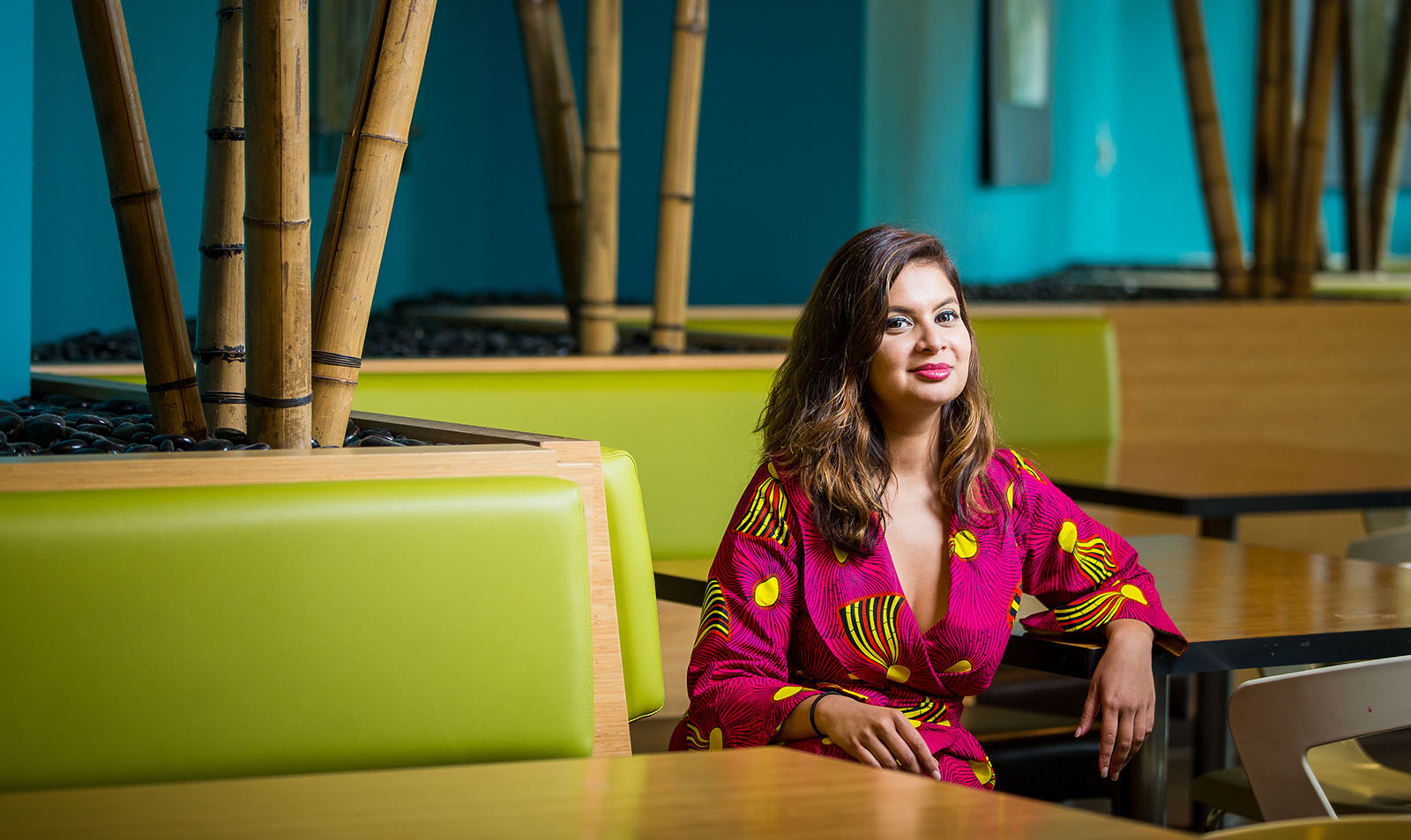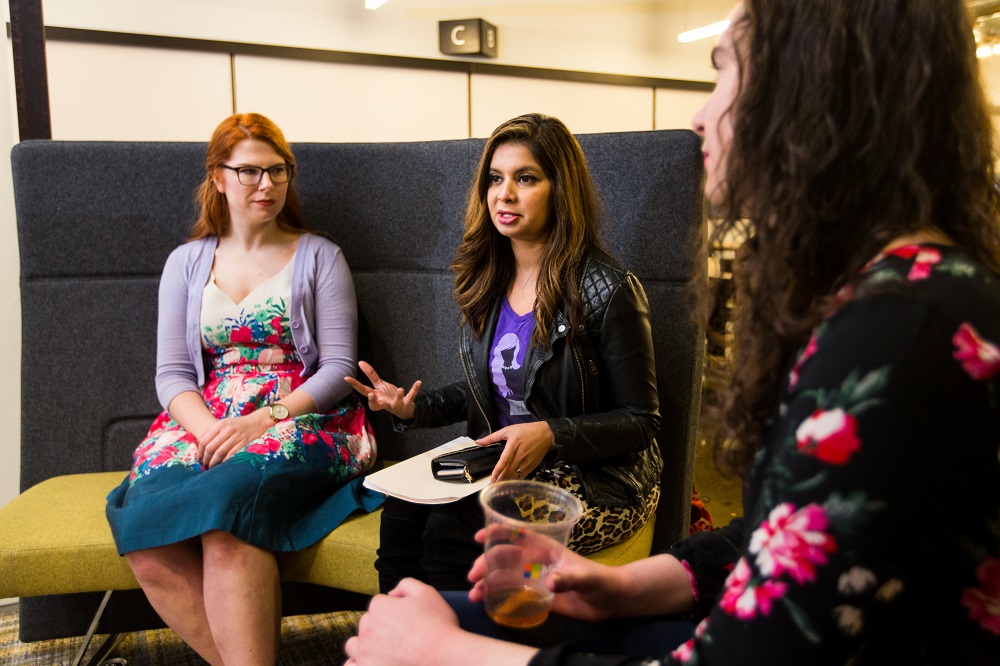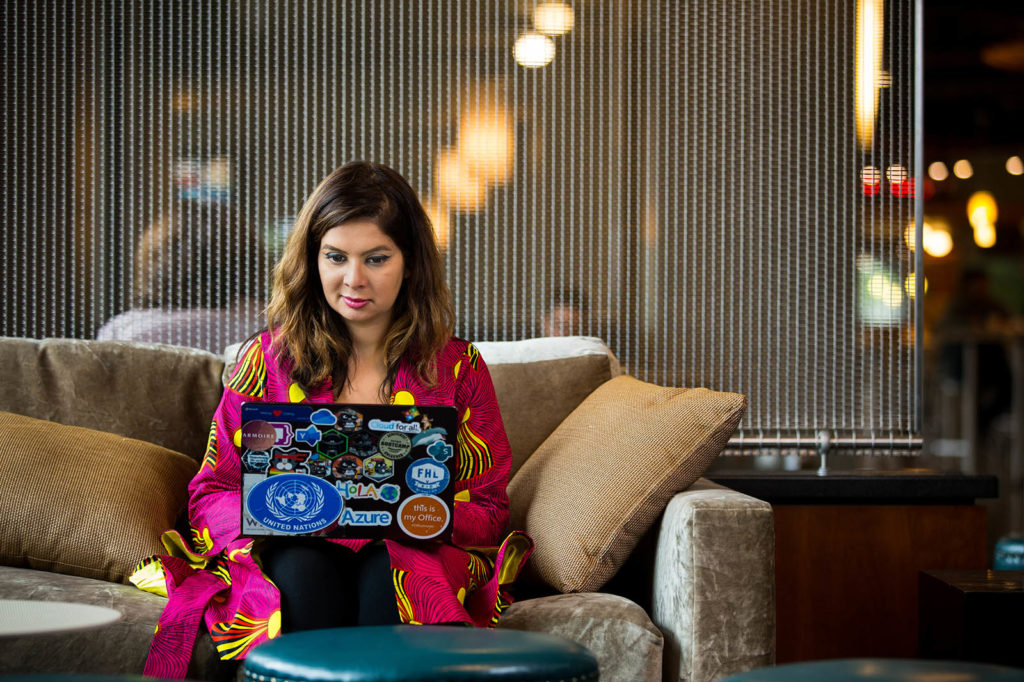
‘I have dyslexia’: A chief engineer spoke up to help others with learning disabilities
As the recent head of the Windows Insider Program, Dona Sarkar led a bustling community of 17 million pre-release Windows customers around the world. Now head of advocacy for Microsoft’s Power Platform, she still travels constantly, crossing oceans and continents, to meet customers in person, gather feedback, manage releases and work with engineers — all in the name of building great software. And that’s just her day job.
A Microsoft software engineer for 14 years, Sarkar is also a fashion designer, book author and popular speaker with talks on creativity, diversity in technology and entrepreneurial hustle.
Last year, Sarkar began talking about another subject important to her: dyslexia. She was diagnosed five years ago, after struggling to read an eye chart. It turned out to be the reason why she always dreaded reading aloud in school. It’s why she often transposes letters and numbers, especially in sequences like flight and tracking numbers. And it’s why charts, graphs and metrics reports are sometimes challenging to read at work.
“When I see 10 numbers on a slide with percentages and line charts, they all start swimming together,” Sarkar says.
By the time she was diagnosed, she had already grown accustomed to asking for helpful ways to present numbers, like including a summary at the top of each chart or using only one concept per slide. She had adopted ways to manage her reading, such as re-writing text by hand to help her understanding.
She didn’t feel the need to talk about her disability or explain that dyslexia does not mean illiteracy. So, for four years, Sarkar mostly kept her diagnosis to herself. She also stayed quiet about her hunch that she might also have dysgraphia, a learning disability that affects writing.
Then one day she watched a Microsoft video featuring a boy with dyslexia who dramatically improved his reading with Microsoft Learning Tools. He used Immersive Reader, a feature in OneNote that expands the space between letters and reads text aloud. Intrigued, Sarkar checked out the feature and now uses it frequently to make sure she’s reading and writing accurately.
“It’s really, really freaking cool,” she says. “It saves my life.”
I don’t want anyone to feel like they don’t belong or can’t succeed in tech because they have a disability.
The video also helped her realize that disabilities like dyslexia and dysgraphia are common and that she — as a prominent leader with dyslexia — could help raise awareness to support others. She decided to share her disability last year at a large team meeting.
“I said, ‘I have dyslexia. I have trouble with this chart. Can we talk about what it is before we move on?’” she recalls. Her coworkers immediately explained the data. Later, many reached out to say their child or spouse also has a learning disability. Their reaction made her feel connected and included, and she says her candor can help reduce imposter syndrome for others, regardless if they have a disability.
“Many people have dyslexia and feel the need to hide it, because they don’t want to look incompetent,” she says. “I feel like I represent others, because if I don’t understand something, there’s probably at least one other person in the room who also doesn’t understand it.”
Evan Goldring, director of engineering for Windows, says Sarkar’s openness helped him learn how technology can support one of his family members, who has a learning disability.
“Dona is a successful person with a high level of achievement, and I’m always interested in improving my family situation,” Goldring says. “I immediately felt comfortable being open with her and really admire her bravery.”

Dona Sarkar, center, speaks at a 2018 International Women’s Day event at Microsoft in Redmond, Washington, with other engineers.
Over the years, Sarkar’s disability has shaped many of the leadership talents she brings to work. An articulate, powerful speaker, she has learned to communicate in the simplest, most direct way possible. She loves writing books for teens and young professionals with straightforward language, partly because reading books has been difficult for her. Her mix of creativity, engineer’s logic and ability to deeply empathize with people enriches her work each day.
“Tech is about creativity and art, and about how well you listen to customers and build the right thing,” she says. “We need all different kinds of people to build products for all different kinds of customers.”
Lately, Sarkar has started talking about her disability on stage. At a Microsoft Ninja camp for teens with disabilities, she demo’d how she uses Immersive Reader, Focus Mode and other Office tools to manage her reading. At the company’s ninth annual Ability Summit, she told an internal audience of more than 1,500 people about her dyslexia.
As a high-profile leader, Sarkar considers it her responsibility to show vulnerability and share her experience with her disability — and the solutions she uses to manage it. She encourages other leaders with a disability to do the same.
“By doing so, you make a far safer space for employees to open up about their disabilities,” she says. “I don’t want anyone to feel like they don’t belong or can’t succeed in tech because they have a disability.”
Learn more about other Microsoft senior leaders who have revealed their disabilities, including Angela Mills and Craig Cincotta.
Lead image: Dona Sarkar at Microsoft in Redmond, Washington. All photos by Dan DeLong.
Editor’s note: This story was updated Oct. 7, 2019, to reflect Dona Sarkar’s new role and title.

